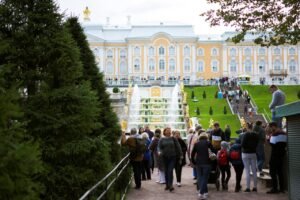
Uncover Norse Mythology Beasts & Their Lore
When we think of mythical creatures, dragons and unicorns often come to mind. But have you ever wondered about the ancient beasts and creatures that dwell in the rich tapestry of Norse mythology? These legendary beings hold tales of intrigue, power, and mysticism that have captivated generations.
From the mighty Thor battling frost giants to Loki’s cunning shape-shifting abilities, Norse mythology is a treasure trove of captivating stories. But what about the creatures that roam this mythical world? What role do they play in these ancient tales, and what do their stories reveal about the ancient Scandinavians’ beliefs and fears?
In this article, we will take a deep dive into the captivating world of Norse mythology and explore the fascinating lore behind various mythical creatures and beasts. We will uncover the significance of these legendary beings in Norse folklore and how they have influenced modern culture. Prepare to be enchanted by the tales of Nordic animal spirits, gigantic monsters, and other captivating creatures that have shaped the mythical landscape of the Vikings.
Table of Contents
ToggleKey Takeaways:
- Discover the captivating world of Norse mythology and its mythical creatures
- Uncover the role these legendary beings played in ancient Scandinavian tales
- Explore the diverse and fascinating beasts that inhabit Norse mythology
- Learn about famous mythical creatures in Norse folklore, such as dragons and giants
- Understand how Norse mythology beasts have influenced modern culture
Introduction to Norse Mythology Beasts
Welcome to the enchanting world of Norse mythology, where mythological creatures and Norse folklore monsters reign supreme. In this section, we will embark on a journey through the rich tapestry of Norse mythology beasts and explore their significance in ancient Scandinavian tales.
Norse mythology, originating from the ancient Germanic tribes of Scandinavia, is a treasure trove of captivating and awe-inspiring tales. These stories paint vivid pictures of formidable creatures that both terrified and intrigued our ancestors, shaping their beliefs and cultures.
“The beasts of Norse mythology capture the imagination, representing powerful forces of nature and embodying the struggles and triumphs of humanity.”
One of the most famous mythological creatures in Norse folklore is the fearsome Jormungandr, the monstrous serpent who encircles the world, poised to unleash chaos during Ragnarok, the apocalypse. Another iconic creature is Fenrir, the giant wolf bound by chains, destined to break free and herald the end of the world.
But not all beasts in Norse mythology are creatures of destruction. The majestic unicorn-like creature known as the Sleipnir, Odin’s eight-legged horse, carries the gods to their various destinations. This mythical steed embodies speed and grace, representing strength and resilience.
Throughout Scandinavian lore, these mythological creatures serve as metaphors for natural phenomena, human emotions, and moral lessons. They offer insights into the human experiences of power, fear, love, and loss. Understanding their significance is key to unraveling the intricate web of Norse mythology.
Exploring the Role of Mythological Creatures
Mythological creatures play a crucial role in Norse mythology, bringing to life the struggles and triumphs of gods and mortals alike. They are more than mere fantastical beings; they embody the values and characteristics that defined Norse culture.
“These creatures are woven into the fabric of Norse society, reflecting the traits and virtues that ancient Scandinavians held dear.”
For example, the mighty dragon Fafnir embodies the destructive qualities of greed and avarice. His tale serves as a warning against the dangers of unchecked desire, reminding individuals of the importance of balance and moderation.
Intriguing Creatures of Norse Folklore
Beyond the well-known beasts, Norse folklore boasts a diverse array of mesmerizing creatures. From the mischievous elves and dwarves dwelling beneath the earth to the intimidating giants with their immense strength, these beings populate the Norse mythological landscape.
Let us not forget the Valkyries, beautiful and powerful female warriors who choose the brave fallen heroes to join Odin’s army in the halls of Valhalla. These valiant figures symbolize courage, honor, and the pursuit of glory in battle.
Fascinating Beasts in Art and Literature
The influence of Norse mythology beasts extends far beyond ancient folklore. These captivating creatures continue to inspire artists, writers, and creators in various forms of media.
“Their allure can be felt in modern literature, films, and even video games, as they add depth, mystery, and excitement to fantastical worlds.”
From J.R.R. Tolkien’s literary masterpieces, heavily influenced by Norse mythology, to blockbuster movies like Thor and the popular video game series God of War, these mythical beings captivate audiences worldwide and keep the legacy of Norse folklore alive.
Norse Mythology Beasts: A Window into the Past
As we delve into the realm of Norse mythology, the vast array of mythological creatures and beasts reveals a society deeply connected to nature and its enigmas. These legends reflect the values, beliefs, and fears of our Scandinavian ancestors, offering us a glimpse into their vibrant and captivating world.
Join us in the following sections as we uncover the legends and tales surrounding legendary beings, Scandinavian folklore, and the enduring influence of Norse mythology beasts in our modern culture.
Legendary Beings of Norse Myths
Norse mythology is replete with a diverse array of legendary beings that play a significant role in the rich tapestry of Norse folklore. From powerful Nordic animal spirits to awe-inspiring mythical animals, these creatures captivate the imagination and embody the essence of ancient Scandinavian tales.
Among the legendary beings of Norse myths, one of the most revered is the majestic fenrir. This monstrous wolf, with its immense size and insatiable appetite, strikes fear into the hearts of even the bravest warriors. Legends speak of the epic battle that will ensue between the gods and the monstrous fenrir during the events of Ragnarök, heralding the end of the world.
Legend has it that fenrir is destined to break free from his binds and unleash his wrath upon the land, symbolizing chaos and destruction.
Another legendary being etched into the folklore of the Norse is the elusive jormungandr, a serpent of such colossal size that it encircles the entire world, grasping its own tail. Also known as the Midgard Serpent, jormungandr embodies the cyclical nature of life and the delicate balance between creation and destruction.
Sleipnir, the eight-legged steed of the god Odin, is another powerful creature that looms large in Norse mythology. This swift and majestic horse carries the Allfather across the realms, symbolizing not only speed and agility but also a mystical connection between gods and mortals.
Legendary Beings of Norse Myths – Key Information
| Legendary Being | Significance |
|---|---|
| Fenrir | A symbol of chaos and destruction. Destined to play a role in Ragnarök. |
| Jormungandr | The Midgard Serpent that encircles the world, representing the cyclical nature of life and the delicate balance between creation and destruction. |
| Sleipnir | The eight-legged steed of Odin, symbolizing speed, agility, and the mystical connection between gods and mortals. |
These legendary beings of Norse myths continue to captivate our imaginations and inspire countless stories, art forms, and even modern-day adaptations. The allure of these Nordic animal spirits and mythical animals is a testament to the enduring power and enchantment of Norse folklore.
Exploring Scandinavian Tales of Beasts
Scandinavian tales are brimming with mythical wonders and enchanting creatures that have captivated audiences for centuries. These captivating stories have been passed down through generations, weaving a rich tapestry of folklore that brings to life the beastly creatures of Norse myths.
One famous creature from Scandinavian tales is the fearsome Jormungandr, also known as the Midgard Serpent. This gigantic sea serpent, born from the union of the trickster god Loki and the giantess Angrboda, is said to encircle the world, grasping its own tail. According to legend, when Jormungandr releases its tail, the world will end in the catastrophic event known as Ragnarok.
“Jormungandr, the mighty Midgard Serpent, is a prominent figure in Scandinavian tales, embodying both primordial chaos and the ever-looming threat of destruction.”
Another intriguing creature of Norse mythology is the Fenrir wolf. This monstrous wolf is known for its insatiable hunger and unmatched ferocity. Despite being initially controlled and restricted by the gods, Fenrir eventually breaks free, leading to cataclysmic events that mark the end of an era.
These Scandinavian tales not only showcase the beastly creatures of Norse myths but also offer valuable lessons and insights into human nature. They explore themes of bravery, cunning, and the eternal struggle between order and chaos.
Through these tales, we are transported to a world where humans interact with gods and supernatural beings, battling against formidable odds and facing incredible trials in their quest for survival and triumph.
The Beauty of Norse Mythology Beastly Creatures
What sets the beastly creatures of Norse myths apart is their complexity and profound symbolism. They are not mere monsters but embody a range of emotions and characteristics that mirror our own human experience.
Take, for instance, Sleipnir, the eight-legged horse and steadfast companion of the Norse god Odin. Sleipnir represents not only speed and endurance but also wisdom and divine knowledge.
Similarly, the nine realms of Norse mythology are filled with diverse creatures like trolls, dwarves, and giants, each with their own unique qualities and abilities. These beings, though often depicted as adversaries or obstacles, offer valuable lessons about strength, resilience, and the importance of forging alliances.
The Beasts of Norse Myths in Art and Literature
The enduring allure of the beastly creatures of Norse myths can be seen in various art forms and literary works throughout history. From epic poems like the “Poetic Edda” to fantasy novels and contemporary artwork, these creatures continue to inspire and spark our imagination.
Artists and writers worldwide have explored the intricate details of these mythical beings, reimagining them in stunning visuals and captivating narratives. Their depictions in popular culture have become iconic, shaping our collective understanding of Norse mythology and infusing it with newfound vibrancy and creativity.
| Creature | Description |
|---|---|
| Jormungandr | A colossal sea serpent that encircles the world. |
| Fenrir | A monstrous wolf with insatiable hunger. |
| Sleipnir | An eight-legged horse symbolizing wisdom and divine knowledge. |
| Trolls | Powerful, often malevolent beings with immense strength. |
| Dwarves | Skilled craftsmen known for their craftsmanship and magical abilities. |
| Giants | Mighty beings who reside in their own realms and often clash with the gods. |
Mythical Creatures in Norse Folklore
Norse folklore is teeming with captivating creatures that have captivated people for centuries. These mythical creatures, known for their awe-inspiring prowess and mystique, continue to intrigue and inspire us to this day. Let’s explore some of the most renowned beings from Norse mythology.
Nidhogg – The Fearsome Dragon
One of the most fearsome mythical creatures in Norse mythology is Nidhogg, a monstrous dragon that dwells deep beneath the roots of the world tree, Yggdrasil. With its insatiable hunger for destruction, Nidhogg relentlessly gnaws at the roots, seeking to bring chaos to the nine realms.
Fenrir – The Monstrous Wolf
In Norse mythology, Fenrir is a colossal and ferocious wolf, destined to play a crucial role in Ragnarok, the cataclysmic battle that will bring about the end of the world. Feared by gods and humans alike, Fenrir is a symbol of untamed power and unyielding fury.
Jormungandr – The Mighty Serpent
Jormungandr, also known as the Midgard Serpent, is a gargantuan sea serpent that encircles the entirety of Midgard, the realm of humans. According to Norse mythology, when Jormungandr releases its tail, Ragnarok will commence, leading to a world consumed by chaos and rebirth.
“These mythical creatures embody the wild and unpredictable forces of nature, reminding us of the delicate balance between order and chaos in Norse mythology.”
– Norse mythologist, Erik Magnusson
These legendary beasts of Norse folklore represent more than just mythical creatures; they hold profound symbolic meanings within the intricate tapestry of Norse mythology. They serve as reminders of the raw power of nature and the constant struggle between good and evil, light and darkness.
As we continue our journey through Norse mythology, we will encounter many more fascinating creatures and unravel the grand tapestry of stories that make up this captivating ancient lore.
Norse Mythology Beasts in Modern Culture
Throughout history, the captivating mythology of the Norse people has sparked the imagination of many. Tales of mighty gods, fearsome warriors, and epic battles have woven a rich tapestry of stories that continue to resonate with people today. Beyond the ancient texts and folklore, Norse mythology beasts have also made their mark on modern culture, leaving an indelible footprint in literature, movies, popular fantasy games, and art.
One of the most well-known creatures from Norse mythology is the imposing dragon. These awe-inspiring creatures with their fiery breath and immense power have become a staple in modern fantasy literature and movies. From J.R.R. Tolkien’s “The Hobbit” to George R.R. Martin’s “A Song of Ice and Fire” series, dragons captivate audiences with their majestic presence and mythical abilities.
Scandinavian tales have also given rise to a range of other mythological creatures that have found their way into modern culture. Giants, colossal beings known for their strength and often depicted as adversaries to the gods, have become a common feature in various forms of entertainment. Movies like “Thor” and video games such as “God of War” draw inspiration from these legendary beings, bringing them to life for a new audience.
“Norse mythology beasts have left an indelible mark on modern popular culture, showcasing their enduring appeal and captivating storytelling.”
Furthermore, the mystical world of Norse mythology has imbued popular fantasy games with a sense of wonder and adventure. Games like “The Elder Scrolls V: Skyrim” and “God of War” incorporate Norse mythology beasts and themes, allowing players to immerse themselves in a world filled with legendary creatures and tales.
The influence of Norse mythology beasts goes beyond mere entertainment and extends into the realm of art. Artists and illustrators inspired by Norse folklore have created stunning visual representations of these creatures, providing a visual feast for enthusiasts and fans. From elaborately detailed illustrations in books to intricate tattoos, the imagery of Norse mythology beasts continues to captivate and inspire.
In conclusion, Norse mythology beasts, with their rich lore and captivating presence, have made a significant impact on modern culture. From literature to movies, popular fantasy games to art, these mythical creatures have left an indelible mark, showcasing their enduring appeal and captivating storytelling. As we continue to explore and delve into the world of Norse mythology, the influence of these legendary beasts is a testament to the power of ancient tales in shaping our modern imaginations.
Conclusion
In conclusion, Norse mythology is home to a wide array of captivating beasts and creatures that continue to fascinate people around the world. From powerful animal spirits to legendary giants and dragons, these mythical creatures play a central role in Norse folklore and ancient Scandinavian tales.
Exploring the lore and significance of Norse mythology beasts allows us to delve deeper into the fascinating world of Norse mythology, unraveling the stories that have been passed down through generations. Through these tales, we gain a greater understanding of the values, beliefs, and cultural heritage of the ancient Norse people.
Moreover, the enduring allure of Norse mythology beasts is evident in their influence on modern culture. From literature and movies to popular fantasy games and art, these creatures continue to inspire and captivate audiences across different mediums and genres.
Whether it’s the fierce and mighty Jormungandr, the cunning Loki, or the majestic Sleipnir, the mythical beasts of Norse mythology have left a lasting impact on human imagination. These creatures remind us of the rich and vibrant tapestry of myths and legends that have shaped our collective consciousness.
FAQ
What are some examples of Norse mythology beasts?
What is the significance of mythical creatures in Norse folklore?
Are there any famous animal spirits in Nordic mythology?
What are some beastly creatures found in Scandinavian tales?
Which are some well-known mythical creatures in Norse folklore?
How have Norse mythology beasts influenced modern culture?

Norwegian A1-A2
Course Overview The Norwegian A1-A2 course is an online program focused on teaching essential Norwegian grammar and vocabulary. It includes a variety of materials and topics, with opportunities to interact with a Norwegian teacher entirely online. Curriculum Highlights The course covers key areas such as grammar and vocabulary and topics such as family, daily life, education, work, traditions, and leisure activities. Who Should Enroll? This course is perfect for beginners or those at the A1 or A2 levels who want to improve their Norwegian skills. What You Get Access to the full Norwegian A1-A2 course. A monthly 1-hour online conversation with a teacher. Many written and oral assignments. Comprehensive information on Norwegian grammar, Norwegian vocabulary and how to use them, important sentence structures, etc. Tips on additional resources to further enhance your Norwegian learning.
0 students enrolled
Last updated Dec 10th, 2024
If you want to learn Norwegian, you can register for classes here. We look forward to hearing from you and helping you become fluent in Norwegian.






